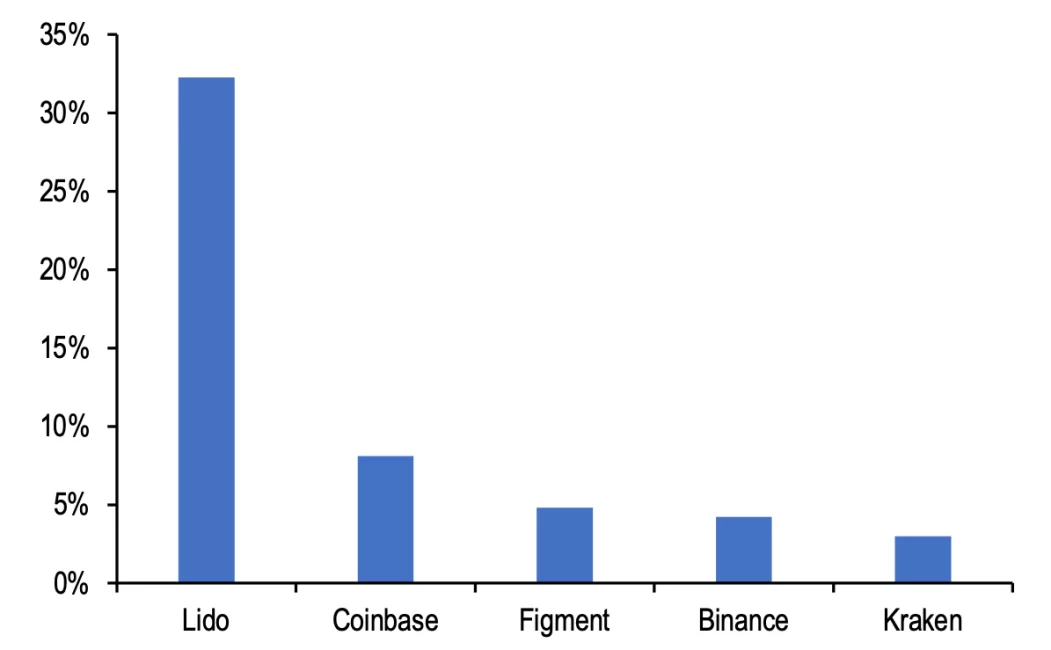The rise of Ethereum staking since major network upgrades, the Merge and Shanghai, has come at the cost of higher centralization and lower staking yields, a new report by JPMorgan said.
JPMorgan analysts, led by senior managing director Nikolaos Panigirtzoglou, issued a new investor note on Oct. 5, warning about the risks stemming from Ethereum’s growing centralization.
The top five liquid staking providers: Lido, Coinbase, Figment, Binance and Kraken, control over 50% of staking on the Ethereum network, JPMorgan analysts noted in the report, adding that Lido alone accounts for almost one-third.
The analysts mentioned that the crypto community has seen the decentralized liquid staking platform Lido as a better alternative to centralized staking platforms associated with centralized exchanges like Coinbase or Binance. However, in practice, “even decentralized liquid staking platforms involve a high degree of centralization,” JPMorgan’s report said, adding that a single Lido node operator accounts for more than 7,000 validator sets or 230,000 Ether.
These node operators get selected by Lido’s decentralized autonomous organization (DAO), which is controlled by a few wallet addresses, “making Lido’s platform rather centralized in its decision making,” the analysts wrote. The report mentioned a case when Lido’s DAO rejected a proposal to cap the staking share at 22% of Ethereum’s overall staking to avoid centralization.
“Lido didn’t participate in the initiatives as its DAO rejected the proposal by an overwhelming majority of 99%,” JPMorgan analysts wrote, adding:
“Needless to say that centralization by any entity or protocol creates risks to the Ethereum network as a concentrated number of liquidity providers or node operators could act as a single point of failure or become targets for attacks or collude to create an oligopoly […]”
Apart from higher centralization, post-Merge Ethereum is also associated with an overall staking yield decline, JPMorgan noted. The standard block rewards declined from 4.3% before the Shanghai upgrade to 3.5% currently, the analysts wrote. The total staking yield has declined from 7.3% before the Shanghai upgrade to around 5.5% currently, the report added.
JPMorgan analysts aren’t the only Ethereum observers who have noticed a significant increase in network centralization following the Merge upgrade. Executed on Sept. 15, 2022, the Merge has been seen as a major impediment to Ethereum’s decentralization and a major reason for dropping yields.
you are the yield pic.twitter.com/ONJT6QmDch
— Pledditor (@Pledditor) October 5, 2023
Ethereum co-founder Vitalik Buterin has admitted that node centralization is one of Ethereum’s main challenges. In September 2023, he said that finding a perfect solution to handle this problem may take another 20 years.
Source: https://cointelegraph.com/news/ethereum-merge-made-network-more-centralized




